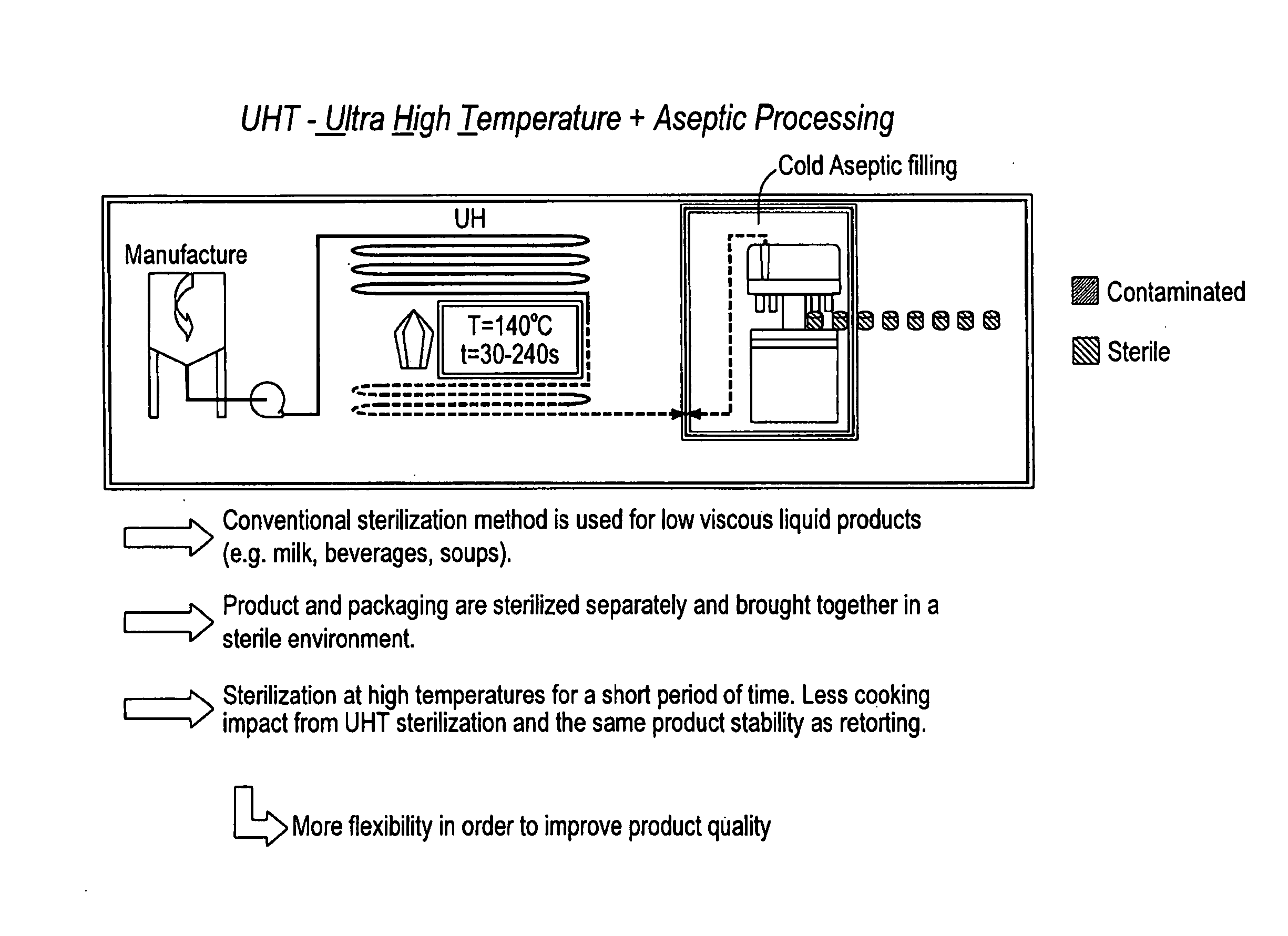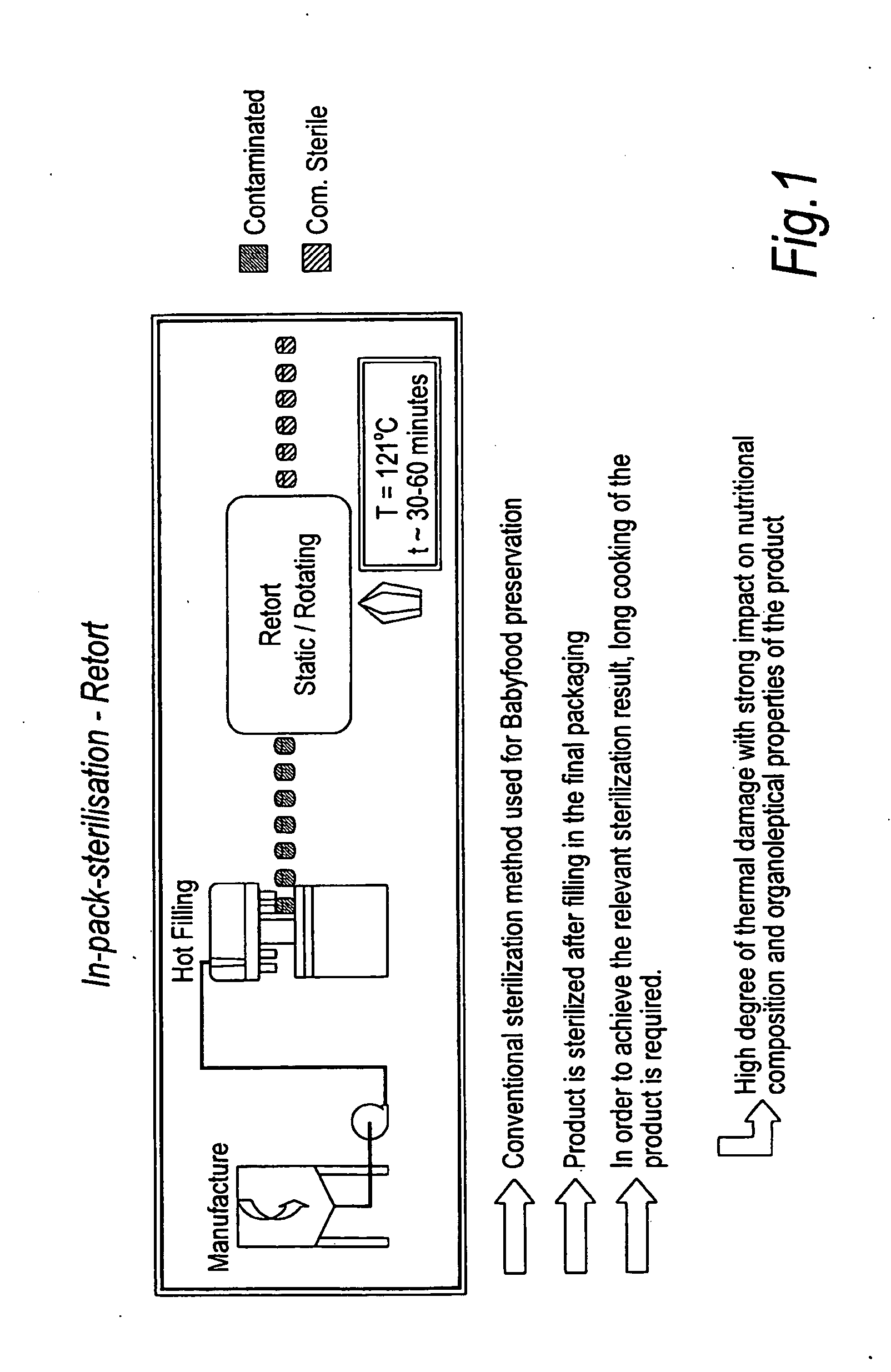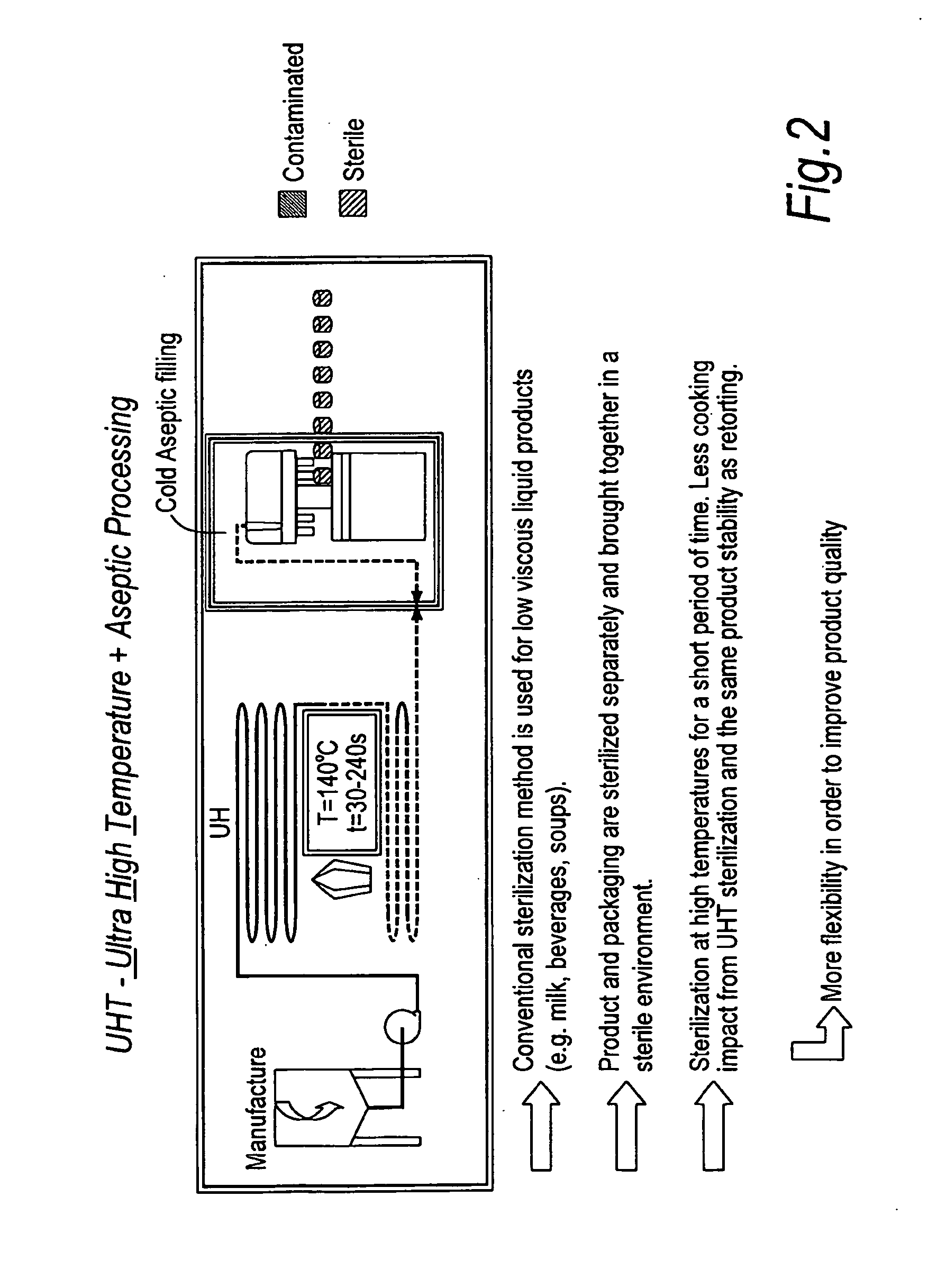Process for producing infant food products
a technology for infant food and processing, applied in the field of processing for producing infant food products, can solve the problems of loss or degradation of heat-sensitive nutrients, loss of nutritional value, taste quality and visual properties, etc., and achieve the effect of natural tastes
- Summary
- Abstract
- Description
- Claims
- Application Information
AI Technical Summary
Benefits of technology
Problems solved by technology
Method used
Image
Examples
example 1
[0093]The following ingredients were used to produce a Stage 2 complete meal.
List of Ingredients for Stage 2 Complete Meal
[0094]
IngredientAmount per 100 g (g)POTATO FLAKES4.000CARROT30.000Lamb frozen8.500RICE SEMOLINA2.000Parsnip frozen5.000Sweetcorn frozen3.000RAPESEED OIL LOW ERUCIC (CANOLA)0.600SUNFLOWER OIL0.400Onion 10 mm frozen4.000WATER42.500
example 2
[0095]The following ingredients were used to produce a Stage 3 complete meal.
List of Ingredients for Stage 3 Complete Meal
[0096]
IngredientAmount per 100 g (g)Pasta spaghetti short8.000Beef frozen8.000CARROT20.000Tomato puree5.000RAPESEED OIL LOW ERUCIC (CANOLA)0.800SUNFLOWER OIL0.400Bell pepper red 10 mm frozen4.000Onion 10 mm frozen3.000Thyme frozen0.100WATER50.700
example 3
[0097]The following ingredients were used to produce a Junior Stage complete meal.
List of Ingredients for Junior Stage Complete Meal
[0098]
IngredientAmount per 100 g (g)Pasta spaghetti short8.000Beef frozen8.000CARROT20.000Tomato puree5.000RAPESEED OIL LOW ERUCIC (CANOLA)0.800SUNFLOWER OIL0.400Bell pepper red 10 mm frozen4.000Onion 10 mm frozen3.000Thyme frozen0.100WATER50.700
Tests and Data
[0099]In order to study the impact of the process of the invention on the quality of final products a number of studies have been carried out as follows.
1) Retention of thiamin (vitamin B1—a key heat-sensitive nutrient).
2) Evaluation of the “cooking value” of retorting versus UHT processing[0100]Both of these tests demonstrate the lower destruction of ingredients / nutrients in the products produced according to the invention.
3) Furan formation.[0101]This undesirable by-product of the cooking process can be demonstrated to be lower in the products produced according to the invention.
4) Retention of p...
PUM
 Login to View More
Login to View More Abstract
Description
Claims
Application Information
 Login to View More
Login to View More - R&D
- Intellectual Property
- Life Sciences
- Materials
- Tech Scout
- Unparalleled Data Quality
- Higher Quality Content
- 60% Fewer Hallucinations
Browse by: Latest US Patents, China's latest patents, Technical Efficacy Thesaurus, Application Domain, Technology Topic, Popular Technical Reports.
© 2025 PatSnap. All rights reserved.Legal|Privacy policy|Modern Slavery Act Transparency Statement|Sitemap|About US| Contact US: help@patsnap.com



